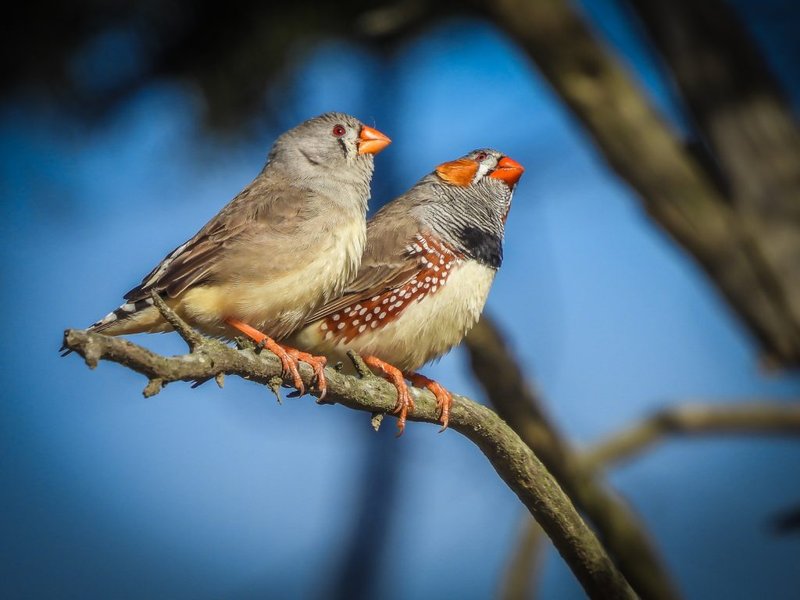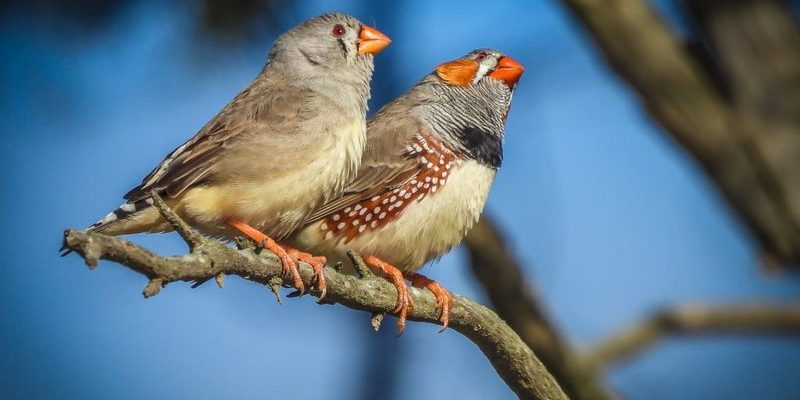
In this article, we’ll take a closer look at the zebra finch’s habitats and ranges. We’ll explore where these birds live in the wild, how their environment shapes their behavior, and even how you can create a suitable space for them if you’re interested in keeping them as pets. So, grab a cup of coffee, and let’s dive into the fascinating world of zebra finches!
Understanding Zebra Finch Habitats
Zebra finches are native to Australia, but their habitats aren’t limited to just one region. These birds favor open grasslands, dry scrublands, and even woodlands. They thrive in environments that offer both food sources and nesting sites, and they’re quite adaptable. You might find them flitting about in eucalyptus trees, foraging on the ground, or even perched on fences—always on the lookout for seeds and insects.
Here’s the thing: while zebra finches are primarily found in wild Australian habitats, they’ve also established populations in other parts of the world. This adaptability is part of what makes them so endearing. They can adjust to various climates, which is why you may spot them in pet stores or aviaries outside Australia.
When looking for zebra finches in the wild, pay attention to open spaces that provide both shelter and food. They prefer areas with grass seeds, which make up a large part of their diet. You might see them in mixed flocks, hopping around and chirping merrily, making it a delightful experience for budding bird watchers!
Aussie Grasslands: The Heart of Their Habitat
Aussie grasslands are the true heart of zebra finch habitats. These birds thrive in dry, arid environments where they can find an abundance of seeds. Picture a vast stretch of golden grass with clusters of wildflowers, where zebra finches flit from blade to blade, searching for tasty morsels.
These grasslands are essential for breeding as well. During the right season, zebra finches build their nests in the dense grasses, creating cozy homes for their young. They typically prefer to nest in sheltered areas to protect themselves from predators. This makes spotting them a real treat—you might have to look closely as they blend naturally into their surroundings!
Interestingly, zebra finches are particularly social birds. They often gather in large flocks, which increases their chances of spotting food and keeps them safe from predators. If you’re ever in Australia, visiting these grasslands during the breeding season can give you a front-row seat to their vibrant social behaviors.
Urban Adaptations: Zebra Finches in Cities
You might not expect to find zebra finches bustling around urban areas, but they’ve proven to be quite adaptable! In cities, these birds often take advantage of parks, gardens, and even backyards. Imagine a sunny afternoon where finches dart between bushes and trees, blending with other wildlife. Their ability to thrive in urban settings is a testament to their resilience.
Urban environments provide them with food sources, like seeds from ornamental plants and flowers. You might even notice them visiting bird feeders set up by enthusiastic bird watchers. If you’re looking to spot zebra finches in a city, check out local parks or community gardens. You’ll be surprised at how easily they blend into urban life.
Here’s an interesting fact: many zebra finches in captivity are bred from birds that originated from urban environments. This means that even if these finches are raised in pet stores, they still retain that wild charm and adaptability. It’s like having a piece of the Aussie outback right in your living room!
The Role of Climate in Their Distribution
Climate plays a crucial role in where zebra finches can thrive. They prefer warm, dry climates typical of their native Australia. However, as they’ve adapted to new locales, you’ll find them in various climates worldwide. One fascinating aspect is how changes in weather can affect their migratory patterns and feeding behaviors.
In their native habitats, zebra finches are known to migrate in response to seasonal changes. When food becomes scarce due to droughts or changing climates, they’ll travel to more hospitable areas. This flexibility allows them to survive and thrive despite environmental challenges. Imagine watching a flock of zebra finches take flight, shifting locations for better food availability—it’s a sight to behold!
If you’re considering keeping zebra finches as pets, remember that they thrive best in environments that mimic their natural habitats. Ideally, they need a warm space with plenty of natural light, as well as cages that allow them to fly and explore. Creating a comfortable home for them means understanding their natural tendencies and preferences.
Why Habitat Matters: The Impact on Behavior
The habitat zebra finches inhabit directly influences their behavior. In the wild, they are incredibly social creatures, often found in flocks. This need for social interaction stems from their natural habitats, where they rely on each other for foraging and protection. You might find them engaging in playful antics, preening one another, and singing joyful songs.
In contrast, pet zebra finches that don’t have enough space to roam or interact may exhibit signs of stress or boredom. That’s why a well-sized cage with appropriate toys and perches is essential. If they’re kept singly or in cramped conditions, you might notice them becoming withdrawn or less active.
Creating an environment that echoes their natural habitat can significantly enhance their well-being. If you’re raising zebra finches, consider adding plenty of branches, safe platforms, and toys to encourage exploration and play. It’s all about mimicking what they’d naturally do in the wild.
Creating The Right Environment at Home
If you’re thinking of having zebra finches as pets, creating the right environment at home is key to their happiness. You’ll want to replicate their natural habitats as much as possible. Start by choosing a cage that’s spacious enough for them to move around freely. A good rule of thumb is to have a cage that’s at least 30 inches long. This is crucial because zebra finches love to fly!
Next, add some natural elements to their space. Use perches of different sizes to keep their feet healthy, and consider including some greenery—safe plants can provide both hiding spots and a touch of nature. You might want to include toys that encourage mental stimulation, because boredom can lead to behavioral issues.
Finally, make sure their diet mimics what they would naturally eat in the wild. High-quality seeds, fresh fruits, and veggies are essential. Make it a point to observe their eating habits; you’ll learn what they enjoy and how to keep their diets varied. The more you tailor their environment to reflect their natural habitats, the happier your zebra finches will be.
Zebra finches are truly remarkable little birds, and understanding their habitats and ranges can enhance your appreciation for them. Whether they’re hopping around the grasslands of Australia or finding their way into urban parks, these birds demonstrate a wonderful adaptability that makes them enchanting to observe.
If you decide to keep zebra finches at home, remember that creating a comfortable environment is vital for their well-being. Whether you’re watching them flutter about in the wild or in your living room, there’s something special about these charming creatures. They remind us of the beauty of nature and the joy of sharing our homes with such delightful pets. So, whether you’re a seasoned bird enthusiast or just curious about these lovely finches, there’s always more to learn and appreciate in their world!

